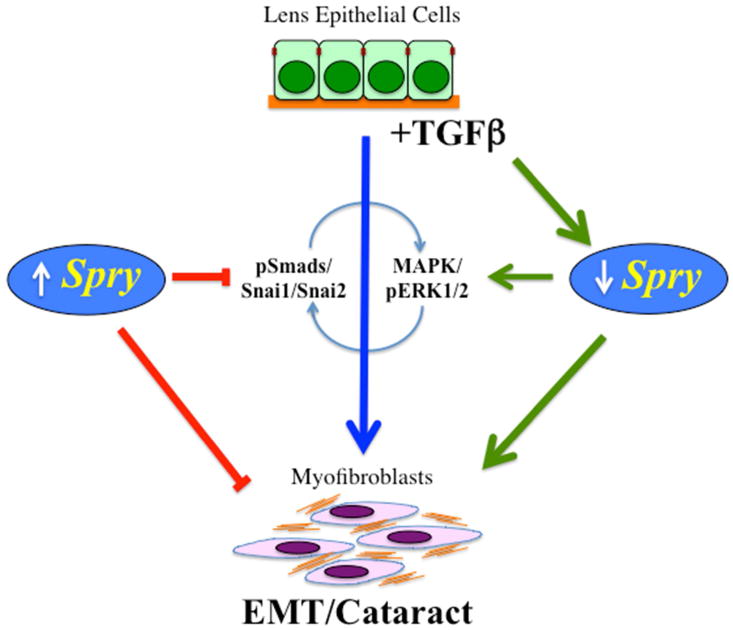Figure 3.

TGFß-signaling via the Smad/Snai molecules results in a lens EMT that contributes to fibrotic forms of cataract. This process also involves (either directly or indirectly) MAPK/ERK1/2 signaling, possibly by downregulating specific RTK antagonists, such as Spry that are normally expressed in the lens epithelium. In Spry-deficient lenses, phosphorylated ERK1/2 levels are elevated and pSmads and Snai1 and Snai2 are translocated to the cell nuclei, leading to an EMT/cataract, similar to that induced by TGFß. Overexpression of Spry in lens cells can effectively block TGFß-induced lens EMT (see Shin et al., 2012).
